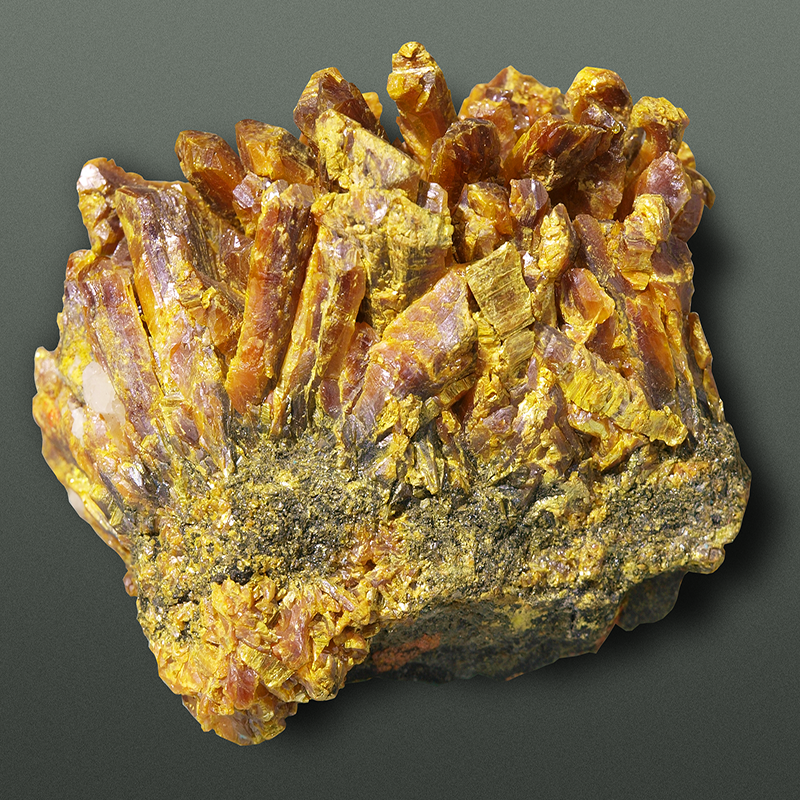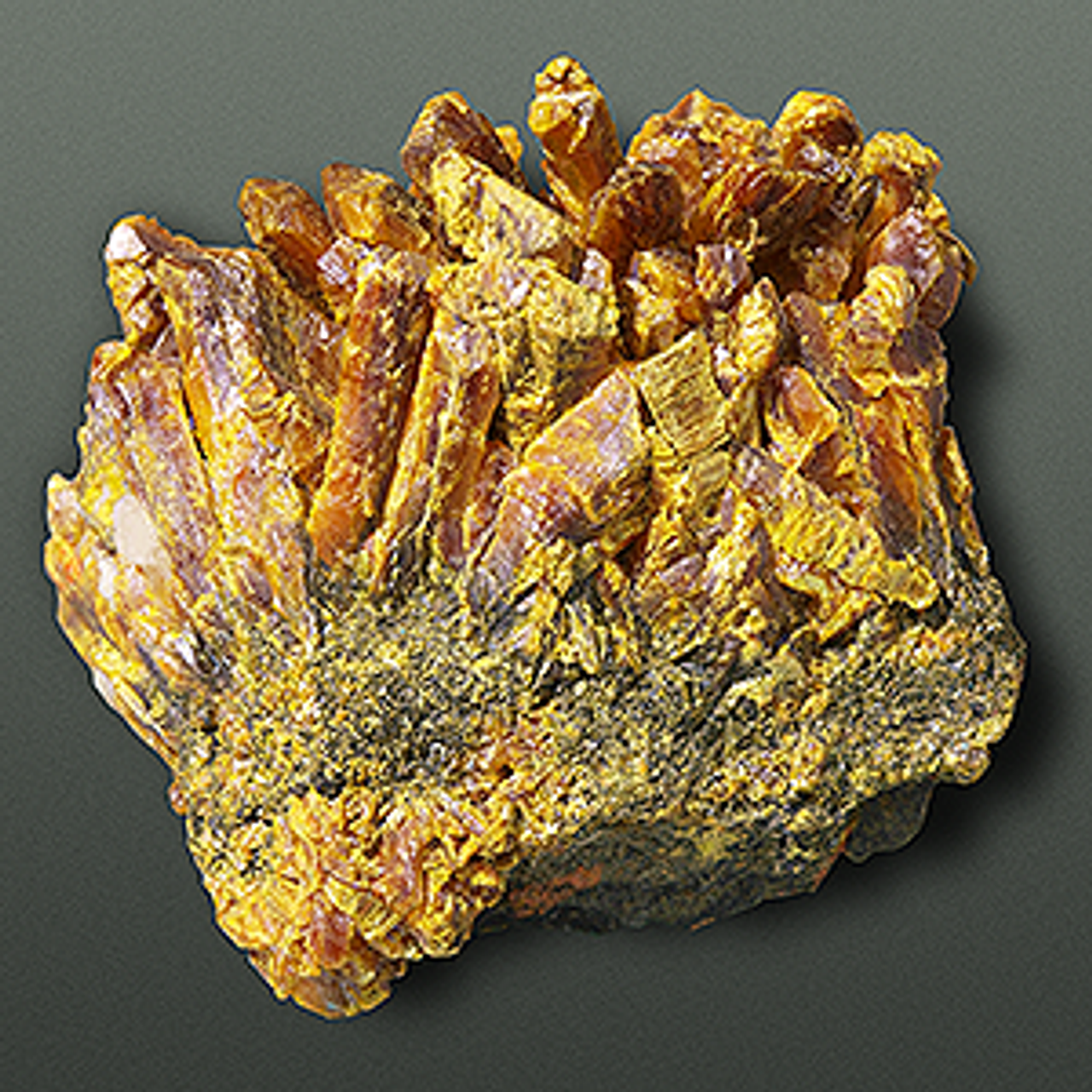Orpiment pigments
 Orpiment (Auripigmentum, King's Yellow, Arsenic Sulfide)
Orpiment (Auripigmentum, King's Yellow, Arsenic Sulfide)
PY 39
Natural pigment suitable for icon painting (egg tempera), oil painting and watercolor painting without additional grinding.
Orpiment, a vivid yellow pigment with a golden sheen that has long fascinated ancient and medieval painters due to its resemblance to gold. Orpiment was a common component in the diverse compound colors developed during the Middle Ages, particularly for writing, where it served as an imitation of gold. This sulfide of arsenic occurs naturally as rock or crystal formations, with our pigments sourced from micro-crystalline and foil-type deposits in Peru.
Our meticulous pigment preparation begins with hand-selecting crystals and manually removing impurities. The pieces are then reduced in size and wet milled in a metal-free environment to prevent discoloration and contamination—an integral aspect of our signature method. The challenge lies not in the mineral's hardness but in its structure, characterized by thin, yellow, transparent layers that tightly hold together during milling. After extensive milling, the powder undergoes washing to separate the pigment from free sulfur, crucial to prevent further discoloration.
The resulting fine powder boasts a pure, bright canary yellow hue with golden sparks, while the coarse pigment exhibits a darker tone reminiscent of powdered gold. The true beauty of the color transcends what can be captured in pictures of the dry pigments or wet samples.
When used in excess, Orpiment, symbolizing the element of sun and light, can evoke a burning effect, making it ideal for imparting sunlight in glazes. When correctly prepared, it can be safely mixed with Master Pigments Flake White Master (901010), but caution must be exercised when mixing with copper pigments such as Malachite and Azurite. Always conduct tests with other colors and use a plastic or ceramic spatula when mixing with oil and paint to avoid contact with metal.
Due to its toxicity, Orpiment requires careful handling to avoid any contact with the skin.

